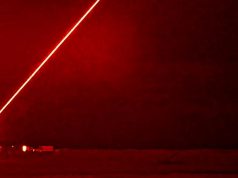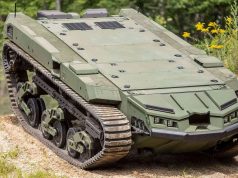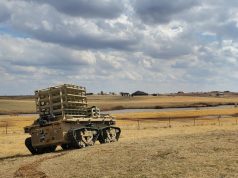
The US Army has taken delivery of all light and medium robotic combat vehicle (RCV) prototypes that it will use in a series of soldier touchpoints to further its campaign of learning.
The fourth and final RCV (medium) prototype was delivered to the US Army Combat Capabilities Development Command (DEVCOM) Ground Vehicle Systems Center (GVSC), which is based at the Detroit Arsenal, Michigan, on May 13. GVSC previously took delivery of four RCV (Light) prototypes in December 2020.
A company-level experiment scheduled for sometime in 2022 will help the US Army to make a decision on how to proceed with robotic combat vehicles in 2023.
The Ripsaw medium RCVs were delivered by Textron, while the light RCVs were delivered by the QinetiQ Inc. and Pratt Miller Defense duo.
The heavy RCV program has fallen behind the start of the medium and light programs.
“These prototypes have been purposely built utilizing what we have learned to date with RCVs and to give us an opportunity to further drive the RCV campaign of learning. The prototypes will be used by soldiers in operational experiments to develop the tactics, techniques and procedures (TTP) that our brigade combat teams will utilize to bring new levels of lethality to our forces through the combining of manned and unmanned teams (MUM-T),” said Maj. Gen. Ross Coffman, director of the Next Generation Combat Vehicles Cross-Functional Team.
While all of the variants are payload agnostic and can be equipped with a variety of modular mission payloads – such as chemical, biological, radiological and nuclear detection kits, smoke obscuration modules, electronic warfare and various weapon systems – the light variant, under 10 tons, could likely support reconnaissance-related missions. The medium variant, under 15 tons, could support direct fire augmentation; and the heavy, 20-25 tons, could bring decisive lethality to its assigned unit.
With the RCVs now in government possession, work has begun to integrate autonomy on the systems, pair them with their manned control vehicle, and the move on to shake-out testing to prepare the vehicles for a soldier operational experiment (SOE) to be held in summer 2022.
“We’re excited about the delivery of the final RCV (M) prototype,” said GVSC Director Mike Cadieux. “The work we’re doing collaboratively with the vendors, with industry, to integrate our Government owned and managed autonomy software onto these platforms is, I think, an ideal model for giving our colleagues and customers, and ultimately the Soldiers, confidence that the vehicles are being developed the right way.”
This summer both the RCV (L) and RCV (M) vehicles will undergo shakedown testing individually, in operations together, and eventually combined with the ground vehicle capability testbed, the Mission Enabling Technologies Demonstrators (MET-D) that serve as the RCV control vehicles during testing. MET-Ds are technology development tools that help the Army to evaluate emerging technology in a relevant tactical environment and decide if the new technology is worth integrating on new or legacy combat platforms.
In addition to the RCV (L) and (M) prototypes, the Army will utilize four specially equipped M113s to serve as RCV surrogates to shape and inform the future RCV effort with simulated larger caliber weapons systems.
These RCV surrogates will couple with both the RCV (M) and RCV (L) to create the Army’s first manned unmanned-teaming company during next summer’s SOE. During this experiment, soldiers from the First Cavalry Division will employ the MUM-T company in offensive and defensive missions against a near-peer opposing force and conduct a live fire exercise as the culminating event.
“Taking these robotic vehicles to the field and getting real-time soldier feedback as they operate simultaneously with all of the supporting capabilities that are required for success: this is what our engineers really look forward to,” said Cadieux.
Upon completion of the Phase II SOE, the Army team will make further refinements on the prototype and surrogate vehicles and then commence upon a Phase III cycle that would include an SOE in FY26. The army expects to acquire and field RCVs following Phase III.


























